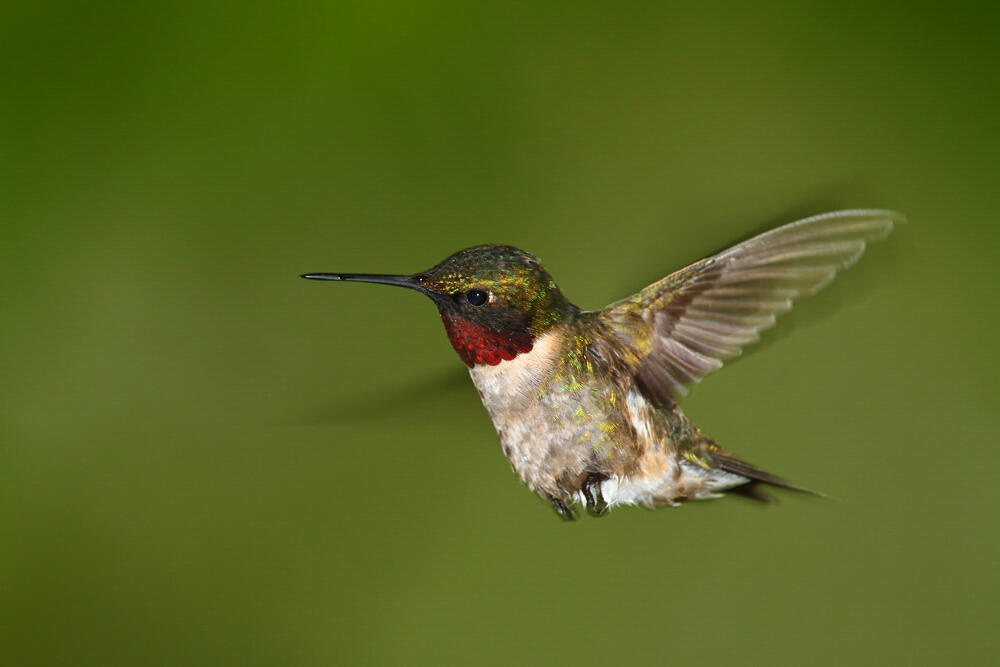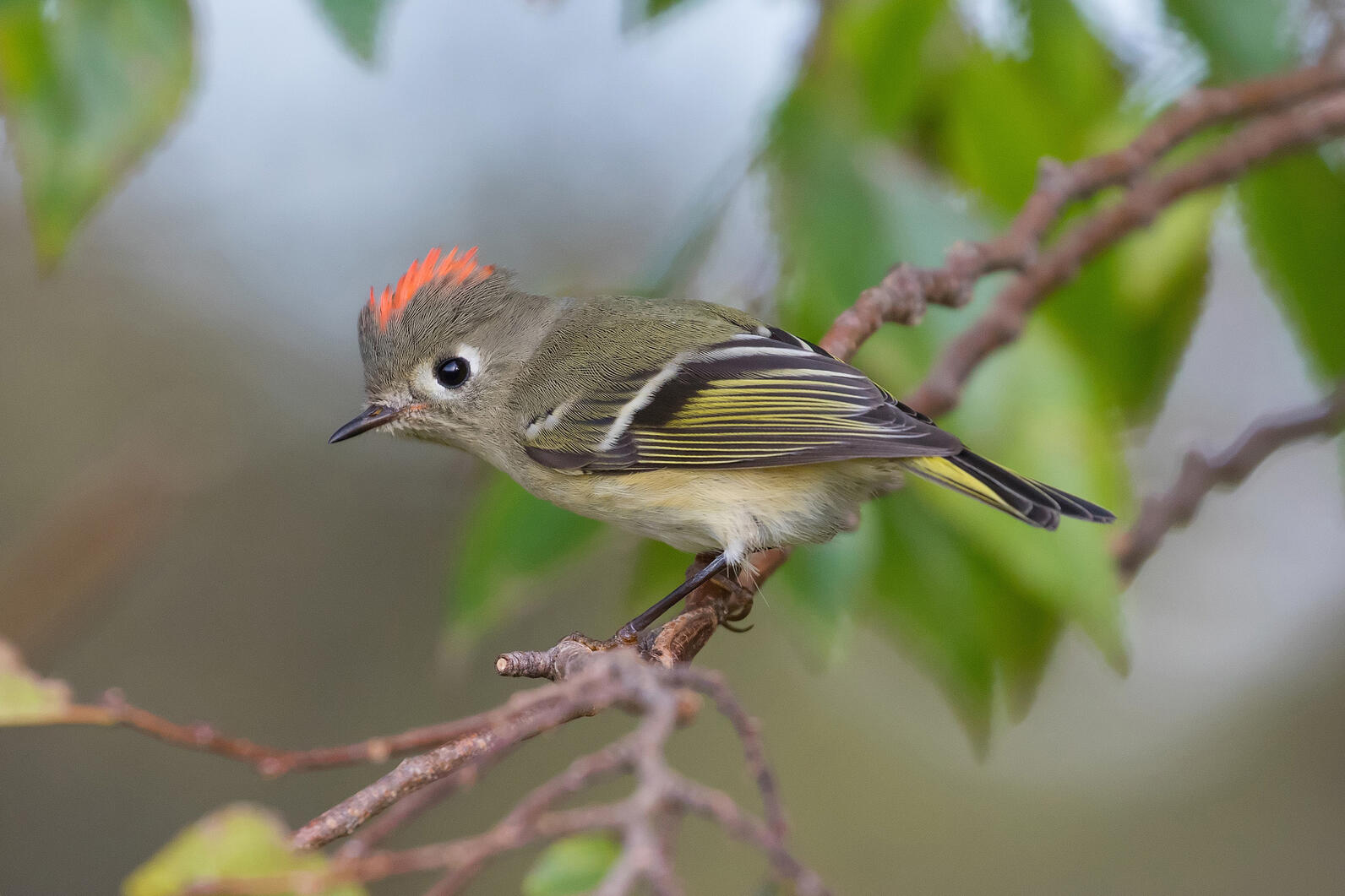Whether you are new to bird watching or an experienced birder, spring migration has something to offer everyone as hundreds of bird species don their brightest breeding plumage and journey through the Great Lakes region, loudly signing their songs.
We have already had the pleasure of welcoming back many spring migrants including Red-winged Blackbirds, Killdeer, Turkey Vultures, and our diminutive Kinglets, most of which will pass through the state over the course of the next month.
Over the next few weeks, the Great Lakes region will welcome some of our smallest migrants including Warblers and our region’s only Hummingbird. Celebrate the return of these tiny migrants by learning how to identify them, where you can find them, and how you can support them:

The only hummingbird in the Eastern U.S. this small species weighs in at just 3 grams -- the same weight as your standard U.S. penny! This brilliantly colored hummingbird migrates south each winter along the coasts of Mexico and throughout Central America. While their migratory routes are poorly documented, it is known that some follow the coast, while others will make the astonishing non-stop flight across the Gulf of Mexico (a roughly 600 mile journey over open water)! In order to make this journey safely, they have to double their body weight by feasting on nectar and insects. Ruby-throated Hummingbirds typically return to the Great Lakes region in mid-May and stay throughout the summer. Explore their 2022 migration map.
ID tips: Tiny birds with long wings, a long bill, and a green cap and back. Males have a black mask, ruby throat and dusky-colored belly. Females are slightly larger than males and have a white throat.
Where to find them: You can find Ruby-throated Hummingbirds along woodland edges, in flowering gardens, or at hummingbird feeders. They are bold little birds that are known to visit hanging planters and feeders. Explore their eBird map to find a hotspot near you!
How to attract them to your space: Plant native orange or red tubular flowers, including Cardinal Flower, Red Columbine, and Butterfly Milkweed. Enter your zip code into Audubon’s Native Plant for Birds database to learn about more native flowers in your area! Learn how to make your space hummingbird-friendly all summer long! Ruby-throated Hummingbirds are more prone to window-collisions than other migratory birds. Learn how to prevent window collisions in your space!
Golden-crowned Kinglets and Ruby-crowned Kinglets

These small, fairy-like forest birds flutter non-stop as they feed on seeds and insects during migration. Each species weighs in at just 5 to 6.5 grams, roughly the weight of a U.S. nickel. While some Golden-crowned Kinglets can be found in parts of the region year-round, many winter as far south as the Gulf Coast! Ruby-crowned Kinglets are typically seen across the region during spring migration as they journey to their Great Lakes breeding grounds in Northern Wisconsin and the U.P. of Michigan.
ID tips: Both Ruby-crowned and Golden-crowned Kinglets have energetic and twitching foraging styles. These tiny songbirds both have round bodies, olive backs, small tails, small bills, and a white wing bar. Golden-crowned Kinglets have a white and black striped face with a golden crown, while Ruby-crowned Kinglets have an olive face with a white eye ring and ruby crown, which is often concealed.
Where to find them: These adorable birds breed in boreal or montane forests, often at the tops of dense mature fir and spruce trees. While on migration, they can be found in lower elevations, foraging in brush piles and understory trees, and within a wider variety of habitats including, old fields, parks, cities, and backyards. Explore their eBird map to find a Kinglet hotspot near you!
How to attract them to your space: Kinglets primarily eat insects, but also seeds. One way to encourage them to your space is to plant native plants that help provide seeds in the fall, and insects in the spring! Ruby-crowned Kinglets have been known to visit bird feeders for hulled sunflower seeds, suet, mealworms and peanut hearts. Learn more about their preferences from ProjectFeederWatch.

This is one of the most common warbler species encountered during migration in the Great Lakes region, and purportedly one of the most abundant bird species in the world! Its population size is estimated to be around 130 million individuals, so it’s no wonder that during migration, these birds tend to dominate. The Yellow-rumped Warbler is almost always the first warbler to arrive in the Great Lakes region in spring and the last to leave in the fall.
Yellow-rumps are hardy and can be more flexible in their diet compared to other warblers. While most warblers eat only insect, the Yellow-rumped will also forage on fruit, sap, and suet, which allows a few individuals to regularly overwinter in our region.
ID tips: The Yellow-rumped Warbler is distinguished by its bright yellow rump patch, yellow “armpits” and bluish-gray back. The adult male has a black mask, which tends to be paler in the female. Yellow-rumps will forage high and low in the canopy and sometimes even on the ground.
Where to find them: During migration you can find them in open areas with fruited shrubs or scattered trees, including parks, riparian woodlands, open pine forests and across suburban landscapes.
How to attract them to your space: Explore Audubon’s Native Plant for Birds database to learn about fruit-bearing plants like Virginia creeper, dogwoods and junipers, or seed-producing plants like Goldenrod.
ABOUT MI BIRDS








